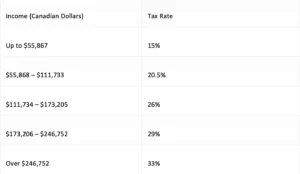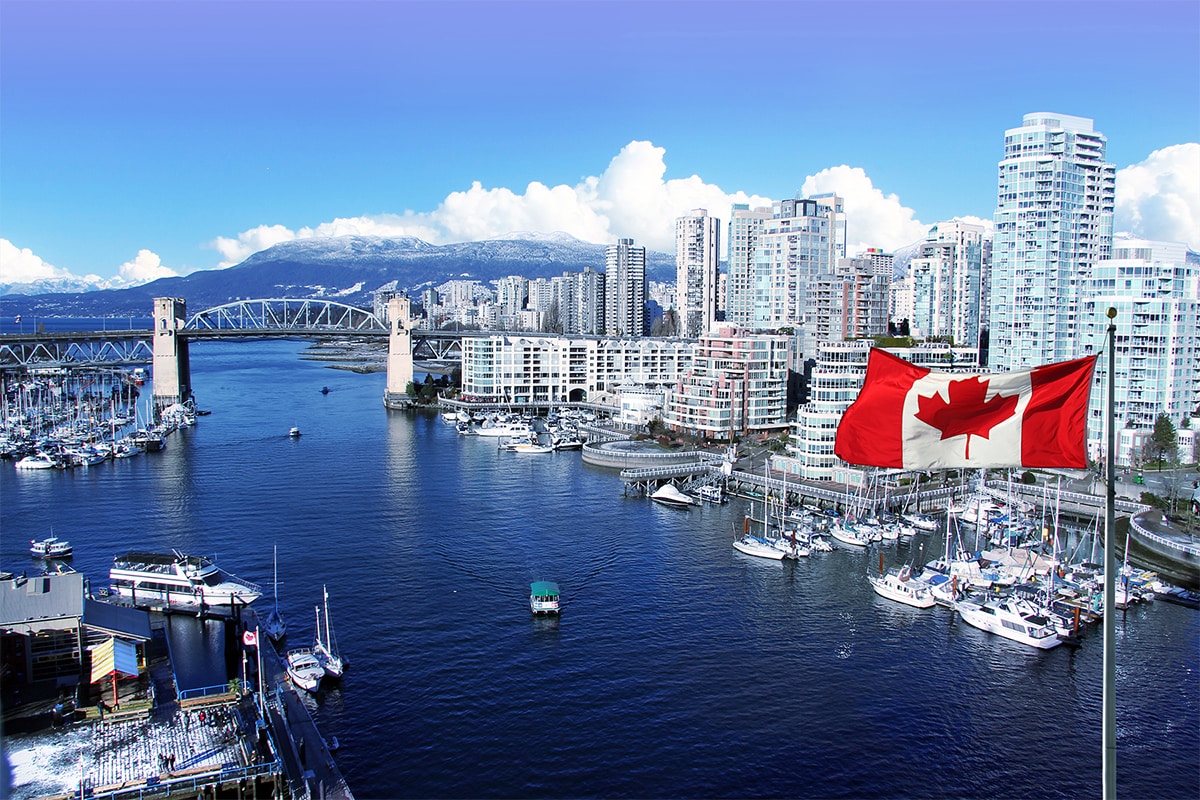Last Updated on 17th October 2025
Canada is one of the most popular expat destinations in the world – and with good reason. But, along with deciding where to live, enrolling in schools and registering for health insurance, there is another essential task to consider before you relocate – assessing your pension plans.
Professionals and families don’t tend to have expat pension planning at the top of their priorities – and it’s understandable since retirement may be some years off yet. However, whether you’re expecting to retire in several years or are moving overseas to live your dream retirement lifestyle, it’s essential to decide what to do with your UK benefits before you pack those bags.
Before we’d even start thinking about creating a future-proof pension plan, we’d need to assess several all-important factors, including:
- What sort of UK pension products do you hold?
- How much have you saved in British schemes?
- When do you expect to retire?
- What access do you need to those funds, for example, to buy a property in Canada?
Accessing UK Pension Benefits for Expats in Canada
There are a few initial questions our consultants commonly get asked when discussing pension planning for British expats:
- What is the best thing to do with my UK pension?
- How can I make sure I’m not paying more tax than I have to?
- Do I have to transfer my pension, or can I leave it in Britain?
The complication here is that there isn’t an easy answer. We’d love to recommend a universally beneficial strategy, but the reality is that two expats might have very different circumstances.
Hence, our recommendation to seek out financial advice from a wealth management team with on-the-ground knowledge in Canada – our advisers in Ontario are always on hand to steer you through the options.
Pension Planning Options
There are three primary ways you might manage your British pension benefits.
- Drawing a UK pension from Canada
- Transferring a British pension to a Canadian ROPS
- Investing a UK pension in a SIPP
Let’s run through each option to demonstrate some of the advantages and when it might be the right solution for your retirement plans.
Drawing a UK Pension From Canada
The first option might seem the easiest – but that doesn’t necessarily mean it’s the best. You can choose to leave a UK pension where it is and draw on that fund from your new home in Canada. There isn’t any law that dictates you can’t do so, but of course, there are issues with accessing funds from across borders, exchange rates and currency transfer charges. Not all pension providers will agree to make deposits to an overseas bank account; many only make payments to a UK account.
If they do agree, your fund provider will remit in Sterling, so the exact value you receive will depend on the currency performance at the time, less the administrative costs of international payments. Your taxes on that pension will depend on whether you remain a UK tax resident or move long-term to Canada.
Again, this isn’t always straightforward, and you might need to declare your income in Canada and the UK and claim via double-tax treaties to avoid losing a substantial proportion of your pension income.
The 2024 federal income tax rates in Canada are as follows.

Note that each territory levies an additional provincial tax on top of the federal rates. For example, in Ontario, you pay an extra 5.05% on your first $51,446 received. The basic personal allowance in 2024 is between $14,156 and $15,705 for all Canadian residents earning less than $173,205 per year.
Transferring a British Pension to a Canadian ROPS
A more popular way to manage your pension income as an expat is to transfer the fund to a Recognised Overseas Pension Scheme – ROPS for short. There are many advantages to doing so, including tax efficiencies, flexibility about how you invest, and the ability to draw on lump sums with few restrictions. Any ROPS transfer must be to a scheme recognised on the HMRC approved list.
Currently, there are six Canadian pension funds on that database, although it’s essential to seek advice since HMRC can – and does – remove approval.
Expats in Canada who transfer their UK pension benefits via a ROPS transfer can:
- Withdraw up to 30% as a tax-free lump sum (compared to 25% in the UK).
- Invest and hold pension funds in any currency, without limitation.
- Protect family members from inheritance tax, with 100% of the balance transferred.
- Reduce tax liabilities, with zero UK tax payable – which can be up to 45% on British funds.
If you do consider a ROPS, there are some potential taxes associated with the transfer. For example, the Overseas Transfer Charge may levy a 25% tax against some international pension transfers.
It’s essential to consult an experienced expat financial adviser to compare the options like-for-like when determining which is the most tax-efficient over the long term.
Investing a UK Pension in a SIPP When Relocating to Canada
Another potential option for expats moving to Canada is to look at a Self-Invested Personal Pension or SIPP. Unlike a ROPS transfer, a SIPP doesn’t technically mean that your fund is transferred overseas, so avoiding the Overseas Transfer Charge (25% of the fund value) is advantageous. There are multiple pros and cons, and you can discover more about the comparable benefits by downloading Chase Buchanan’s complimentary SIPPs vs ROPS Guide.
For example, if you are moving to Canada before retirement:
- SIPPs could be preferable if you are a UK tax resident, as you can continue to claim tax relief on your contributions – which wouldn’t apply to a ROPS pension.
- However, contributions would be limited to the UK thresholds and taxed accordingly – whereas you could contribute as much as you wish to a ROPS.
As you can see, the right decision depends entirely on your circumstances.
Making Informed Planning Decisions
We’ve run through just some of the multiple ways to manage your UK pension fund when relocating to Canada – and other alternatives could be advantageous.
One example might be to look at different investment strategies, with potential benefits of reducing your overall tax burden and providing greater flexibility outside of a conventional pension structure.
Ultimately, the ideal pension plan for you will depend on:
- The current value of your pension fund – what tax liabilities might you incur when making withdrawals or transfers?
- How do you want to use your savings – do you want to make a lump-sum withdrawal? If so, for how much, and before or after your relocation?
- When do you expect to retire – will you have several more years of investment returns, or do you anticipate drawing on your pension shortly?
- What type of pension schemes do you hold – if a defined benefit scheme, what are the risks of sacrificing that guaranteed lifetime income?
Whatever the scenario, the first step is to contact the Chase Buchanan Wealth Management team in Canada or speak with our UK Administration Centre. We’ll work with you to understand your circumstances, and help you make informed, long-term decisions about the right way to protect your retirement income.
* Updated April 2024


